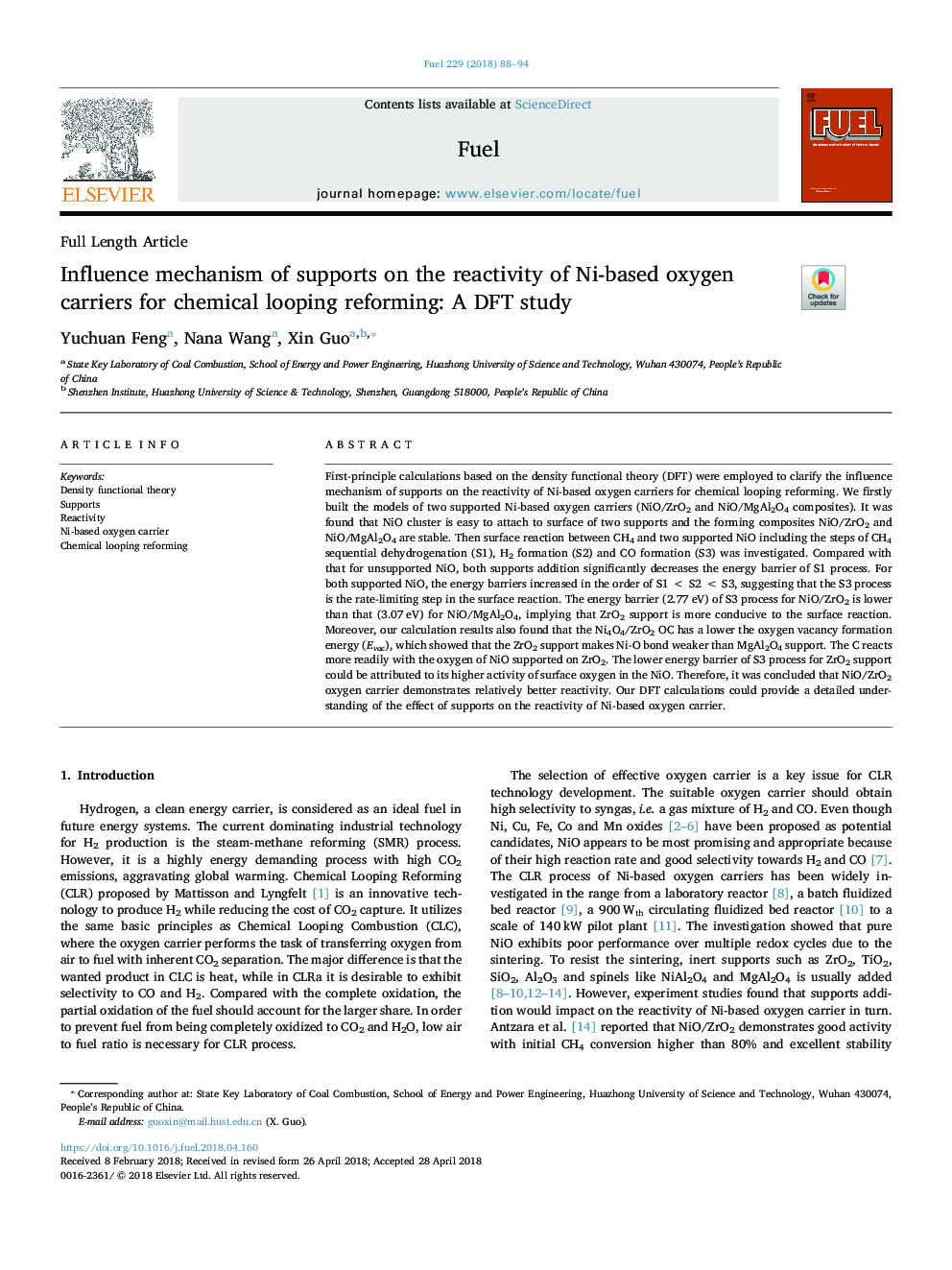| Article ID | Journal | Published Year | Pages | File Type |
|---|---|---|---|---|
| 6630677 | Fuel | 2018 | 7 Pages |
Abstract
First-principle calculations based on the density functional theory (DFT) were employed to clarify the influence mechanism of supports on the reactivity of Ni-based oxygen carriers for chemical looping reforming. We firstly built the models of two supported Ni-based oxygen carriers (NiO/ZrO2 and NiO/MgAl2O4 composites). It was found that NiO cluster is easy to attach to surface of two supports and the forming composites NiO/ZrO2 and NiO/MgAl2O4 are stable. Then surface reaction between CH4 and two supported NiO including the steps of CH4 sequential dehydrogenation (S1), H2 formation (S2) and CO formation (S3) was investigated. Compared with that for unsupported NiO, both supports addition significantly decreases the energy barrier of S1 process. For both supported NiO, the energy barriers increased in the order of S1â¯<â¯S2â¯<â¯S3, suggesting that the S3 process is the rate-limiting step in the surface reaction. The energy barrier (2.77â¯eV) of S3 process for NiO/ZrO2 is lower than that (3.07â¯eV) for NiO/MgAl2O4, implying that ZrO2 support is more conducive to the surface reaction. Moreover, our calculation results also found that the Ni4O4/ZrO2 OC has a lower the oxygen vacancy formation energy (Evac), which showed that the ZrO2 support makes Ni-O bond weaker than MgAl2O4 support. The C reacts more readily with the oxygen of NiO supported on ZrO2. The lower energy barrier of S3 process for ZrO2 support could be attributed to its higher activity of surface oxygen in the NiO. Therefore, it was concluded that NiO/ZrO2 oxygen carrier demonstrates relatively better reactivity. Our DFT calculations could provide a detailed understanding of the effect of supports on the reactivity of Ni-based oxygen carrier.
Keywords
Related Topics
Physical Sciences and Engineering
Chemical Engineering
Chemical Engineering (General)
Authors
Yuchuan Feng, Nana Wang, Xin Guo,
